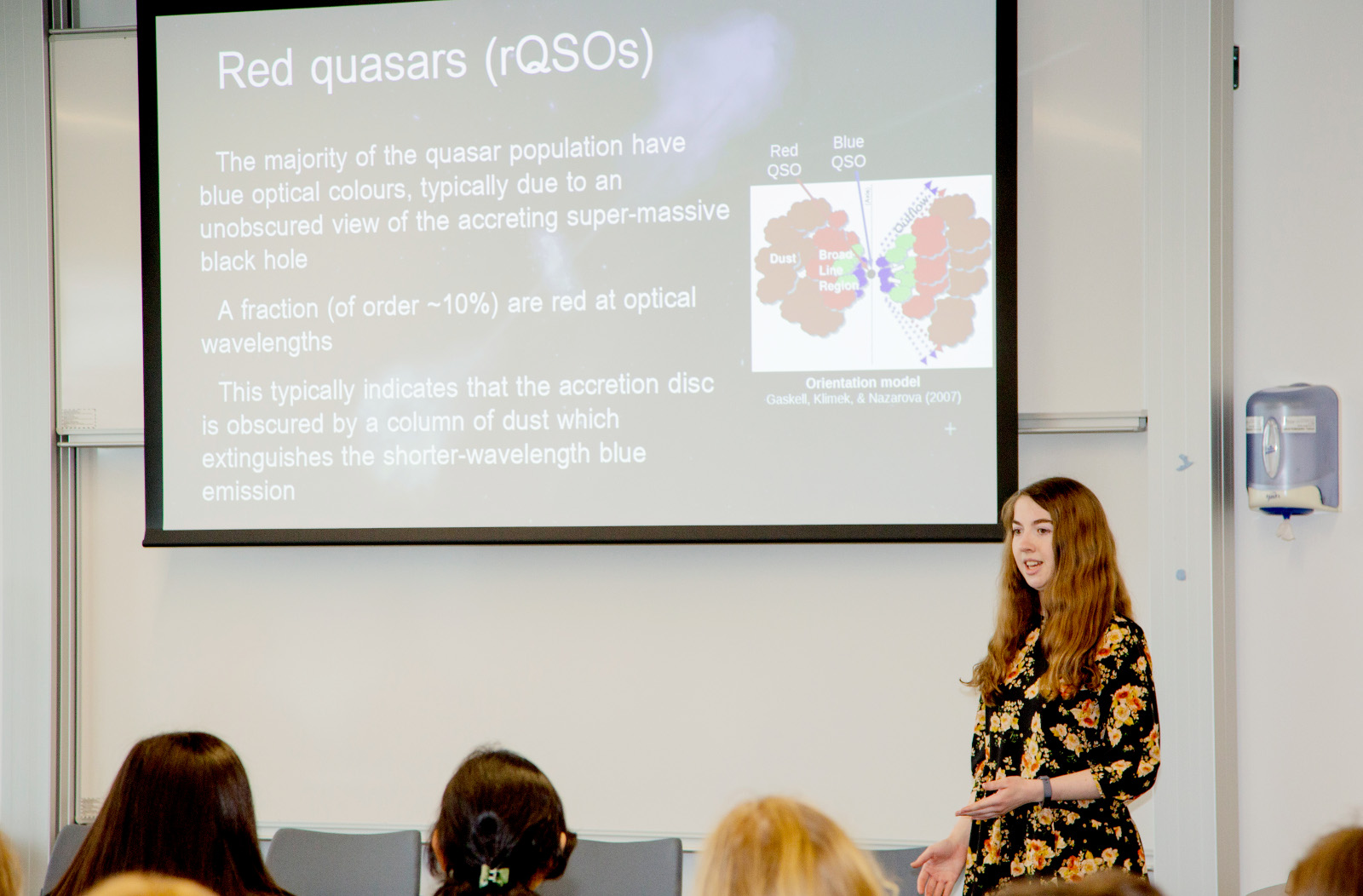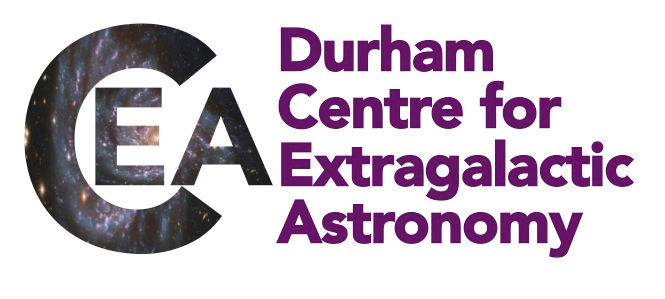CEA News, April 2019
CEA Student Wins Video Prize
CEA PhD research student Vicky Fawcett recently won third prize in a Student Research Video Competition as part of the Faculty Women in Science event on the 19th March. As part of the award, Vicky was invited to present her work at the event, whilst prizes were presented by Dame Prof. Julia Higgins (President of the Institute of Physics). The competition was open to students who identify as belonging to under-represented groups in STEM and asked for videos of 2 minutes focused on motivation and interest in a student's research topic.
 Dame Prof. Julia Higgins (l) presents Vicky with the Student
Research Video prize.
Dame Prof. Julia Higgins (l) presents Vicky with the Student
Research Video prize.
In her video, which is available below, Vicky talks about her research into red quasars, a unique subset of distant objects referred to collectively as active galactic nuclei (or AGN). AGN consist of a supermassive black hole at the centre of a galaxy, surrounded by an extremely bright disc of matter falling onto the black hole. Quasi-stellar objects, also known as quasars (QSOs), are the most powerful class of AGN and are some of the brightest objects in the Universe. The majority of the quasar population appear blue in colour due to an unobscured view of the accreting super-massive black hole. However, an important fraction of quasars have now been discovered that appear red in the optical spectrum.
In the simple unified model of AGN, the source of the red
colours are believed to be dust obscuration due to a dusty torus,
although this is still widely debated. Exciting new results show
 Vicky presents her work at the Faculty Women in Science Event
fundamental differences in the radio properties of red quasars,
which cannot be explained with a simple viewing angle theory,
hinting towards an evolutionary phase.
Vicky presents her work at the Faculty Women in Science Event
fundamental differences in the radio properties of red quasars,
which cannot be explained with a simple viewing angle theory,
hinting towards an evolutionary phase.
Vicky's work uses deep radio-telescope data to further explore the
differences in the radio properties, providing important
insight into the differences in shape, referred to as morphology, between
these red quasars and the dominant blue population.
The results of Vicky's work build on an emerging picture of red
quasars being a fundamentally different form of AGN from the more common blue
quasars.

